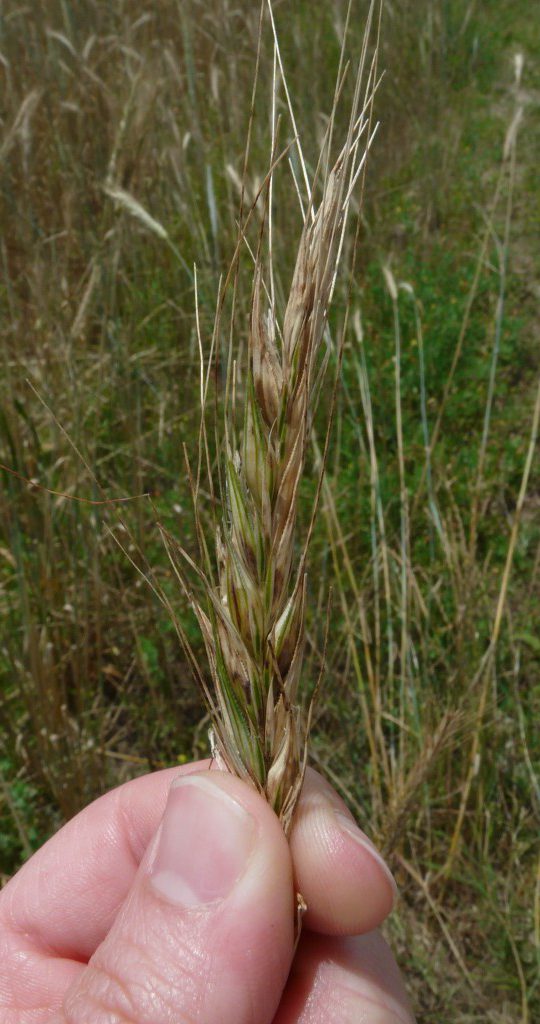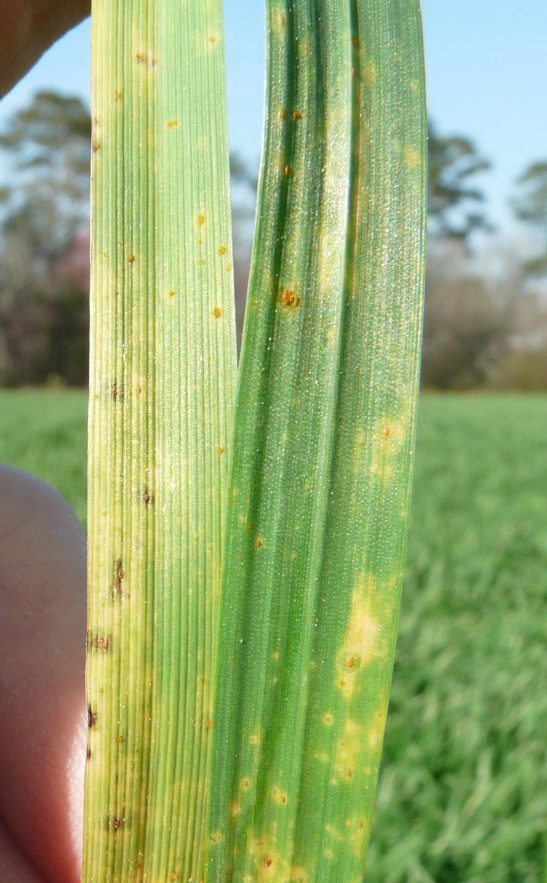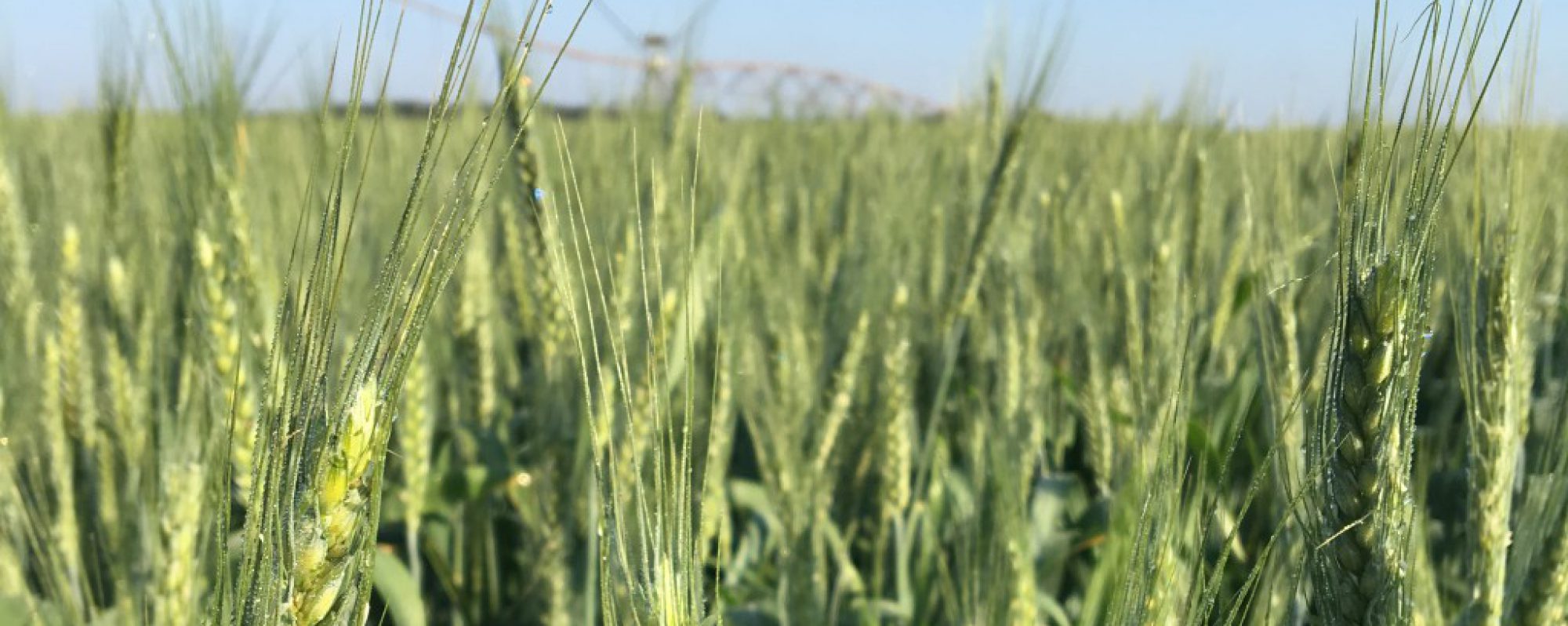
I’ve been following our small grain crops in the county. We have wheat fields initially planted for cover back in October. This ended up being the best time to plant grain since we were soaking wet in November and December. These fields were treated for weeds, then sidedressed and they are completely headed out now. And I got soaking wet walking a little bit through this field Monday morning. Fields are also getting fungicide treatment from the plane.
Once wheat heads out, we scout for disease. The most significant disease in leaf and/or stripe rust. Once rust infects a field, test quality and grain yield loss occur quickly. If there is something good about rust is that it has to be re-introduced each year. The spores don’t survive in the soil or plant residue. We can ‘keep an eye on it’ as it moves to GA. I talked with former Seminole County Agent Rome Ethredge this week who has not seen rust yet. Generally its going to come from Louisiana and hit the southwest part of the state and come across. But we still have to make a decision about treating with a fungicide.

Should we treat if rust is not near?
Because rust is not the only disease that affects wheat when grain is forming, putting out a fungicide is not a bad idea. This is because other pathogens like Fusarium Head Blight or Scab infect during heading and flowering. Remember when FHB was bad in 2015? Many of us were not prepared for it. If putting out a preventative fungicide, UGA Extension Pathologist Dr. Alfredo Martinez recommends doing it within a few days after all heads have come out. Keep in mind not all fungicides will protect against both rust and head blight.


